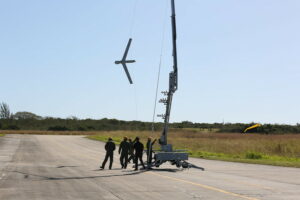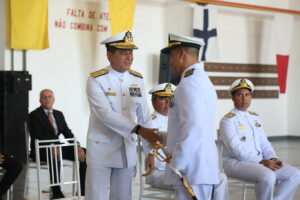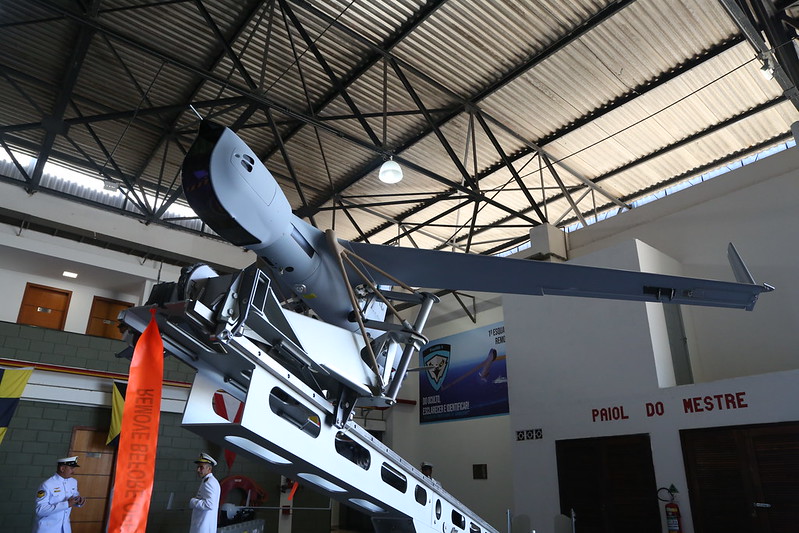On August 26, the Brazilian Navy (MB) celebrated 106 years of Naval Aviation, and the big star of the event was the recently established 1st Remotely Piloted Aircraft Squadron (EsqdQE-1). The new squadron is composed of six ScanEagle drones, as well as two catapult launchers and two recovery systems.

According to the MB, the drones will be used for intelligence, surveillance, and reconnaissance missions; disaster monitoring; naval traffic control; naval inspection; prevention of illicit activities; piracy and terrorism; as well as rescue operations to safeguard human life at sea.
The creation of the drone squadron marks the beginning of a new means for the MB, because it is the first time it will use unmanned aircraft systems.
“Today is a historic day for the Brazilian Navy and its importance is related to the fact that it unveils our future. And so are unmanned aerial vehicles, whose cornerstone the Navy is laying today, the fruit of an effort made by the generations that preceded us,” Admiral Almir Garnier Santos, commander of the MB, said at the EsqdQE-1 launching ceremony.
The aircraft are manufactured by Insitu, a Boeing subsidiary, and are being tested on land since their March arrival from the United States. The ScanEagle was developed in the early 2000s and was first deployed in theater in 2004 with the U.S. Marine Corps. The new squadron was stationed at the São Pedro da Aldeia Naval Air Base, about 140 km from Rio de Janeiro.
The ScanEagle has a wingspan of 3.1 meters, a length of 1.67 meters, and a maximum take-off weight of 23.4 kilograms. It has a maximum payload of 3.4 kg and reaches an altitude of 5,944 meters.

“The ScanEagle has excellent features. First because it is very small, being difficult to see. It has a range capability of around 100 km, which gives great surveillance coverage possibility. It doesn’t need a runway because it has a launcher and a collector; this is a strong factor in use. We have the capability to use it from both land and sea. It has both electro-optical and infrared sensors and this gives us a 24/7 operation capability,” MB Captain Fábio Nunes, EsqdQE-1 commander, said during the event celebrating the 106th anniversary of Naval Aviation, at the MB Naval Air Base.
The MB is now installing the systems necessary to use the ScanEagle on board vessels, with the first operation expected to be carried out by December.









